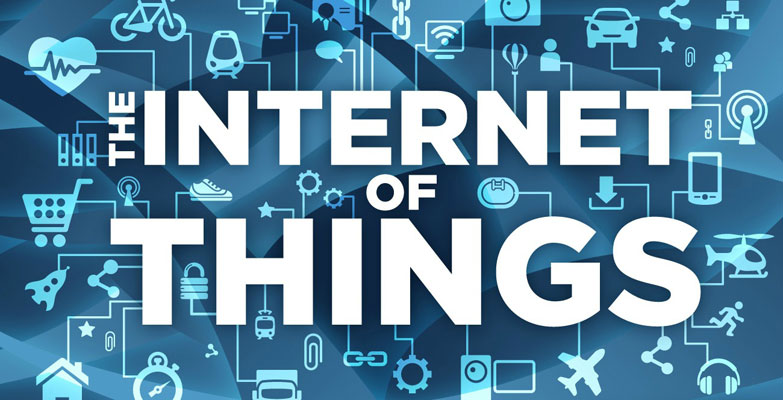Technology Of 4th Industrial Revolution
Technology Trends Of The 4th Industrial Revolution
Artificial Intelligence & Machine Learning
What it's miles: Artificial intelligence (AI) and system learning talk over with the capability of machines to study and act intelligently—that means they could make decisions, perform obligations or even predict future results based totally on what they study from the statistics.
I accept as true with AI will rework our international and how we live in it. It's already utilized in our regular lives from Google searches to powering Amazon's product pointers and the personalised hints you get from Netflix and Spotify as well as in the security procedure for fraudulent credit score card use. AI and gadget studying also are the inspiration of which many other technology developments are constructed. AI gives machines the potential to carry out a wide range of human-like techniques, including seeing (facial popularity), writing (chatbots), and talking (Alexa). AI will infiltrate even extra of our lives because the capability for machines to behave intelligently receives higher and higher.
In computer technological know-how, artificial intelligence (AI), from time to time known as device intelligence, is intelligence confirmed by means of machines, in contrast to the natural intelligence displayed via people and animals. Leading AI textbooks outline the sphere as the observe of "wise agents": any device that perceives its surroundings and takes moves that maximize its threat of correctly attaining its dreams.[1] Colloquially, the term "artificial intelligence" is frequently used to explain machines (or computer systems) that mimic "cognitive" capabilities that humans companion with the human mind, which include "studying" and "problem fixing".[2]
As machines emerge as an increasing number of capable, responsibilities taken into consideration to require "intelligence" are regularly eliminated from the definition of AI, a phenomenon referred to as the AI impact.[3] A quip in Tesler's Theorem says "AI is something hasn't been performed yet."[4] For instance, optical man or woman popularity is often excluded from matters taken into consideration to be AI,[5] having come to be a routine era.[6] Modern system abilties usually categorized as AI encompass efficaciously understanding human speech,[7] competing at the highest degree in strategic sport systems (which includes chess and Go),[8] autonomously running cars, wise routing in content material transport networks, and navy simulations.
The Internet of Things (IoT)

What it's far: The Internet of Things (IoT) refers to the growing variety of everyday devices and gadgets which are related to the internet and accumulate and transmit records.
While the first smart tool a lot of us had been exposed to become a cellphone, we have smartwatches, TVs, refrigerators, and could soon have smart everything—nowadays, the whole lot is getting smarter. Today there are 20 billion smart gadgets, however it is anticipated to develop to as a minimum 2 hundred billion connected devices quickly. These clever devices are chargeable for an explosion of statistics and are hastily converting our international and the way we stay in it. The capability of machines to hook up with and share records with every other is a key a part of the IoT.
The Internet of things (IoT) is a gadget of interrelated computing devices, mechanical and digital machines furnished with unique identifiers (UIDs) and the ability to transfer statistics over a community with out requiring human-to-human or human-to-laptop interplay.[1][2][3][4]
The definition of the Internet of factors has advanced because of the convergence of more than one technology, actual-time analytics, device mastering, commodity sensors, and embedded systems.[1] Traditional fields of embedded systems, wireless sensor networks, manipulate structures, automation (including domestic and building automation), and others all make contributions to enabling the Internet of things. In the patron market, IoT era is most synonymous with products referring to the concept of the "clever domestic", consisting of devices and appliances (including lighting fixtures, thermostats, home safety structures and cameras, and different home appliances) that assist one or extra commonplace ecosystems, and can be controlled through devices associated with that ecosystem, consisting of smartphones and smart audio system.
There are some of critical worries about dangers within the growth of IoT, particularly in the regions of privacy and safety, and therefore enterprise and governmental movements to cope with these worries have began.
Cloud & Edge Computing

What it's miles: Cloud computing way storing and processing information on different humans’s computers in a information middle thru a network that gives organizations the ability to save big amounts of records and process it in nearly actual-time. Edge computing refers back to the processing of statistics on gadgets including smartphones.
Cloud carrier carriers such as Amazon, Google, and Microsoft permit organizations to host all vital IT infrastructure in their cloud as opposed to within an company's virtual walls reducing overhead prices to maintain and function person structures, software and facts. Edge sits at the other stop of the dimensions—instead of a ways away in faraway statistics facilities, aspect computing occurs up-close-and-personal at the frontline of commercial enterprise operations. Rather than ship every piece of records accrued via cameras, scanners, handheld terminals or sensors to the cloud to be processed, aspect devices carry out some or all of the processing themselves, at the supply where the data is gathered.
Edge computing is a allotted computing paradigm that brings computation and information garage in the direction of the place where it's miles needed, to improve reaction instances and save bandwidth.[1]
The origins of area computing lie in content material transport networks that had been created within the late 1990s to serve web and video content material from part servers that have been deployed close to users.[2] In the early 2000s, those networks evolved to host programs and application additives at the brink servers,[3] ensuing within the first industrial area computing services[4] that hosted applications along with provider locators, shopping carts, real-time information aggregators, and ad insertion engines.[3]
Modern area computing substantially extends this approach via virtualization technology that makes it less difficult to installation and run a wider variety of packages on the brink servers.




Comments
Post a Comment